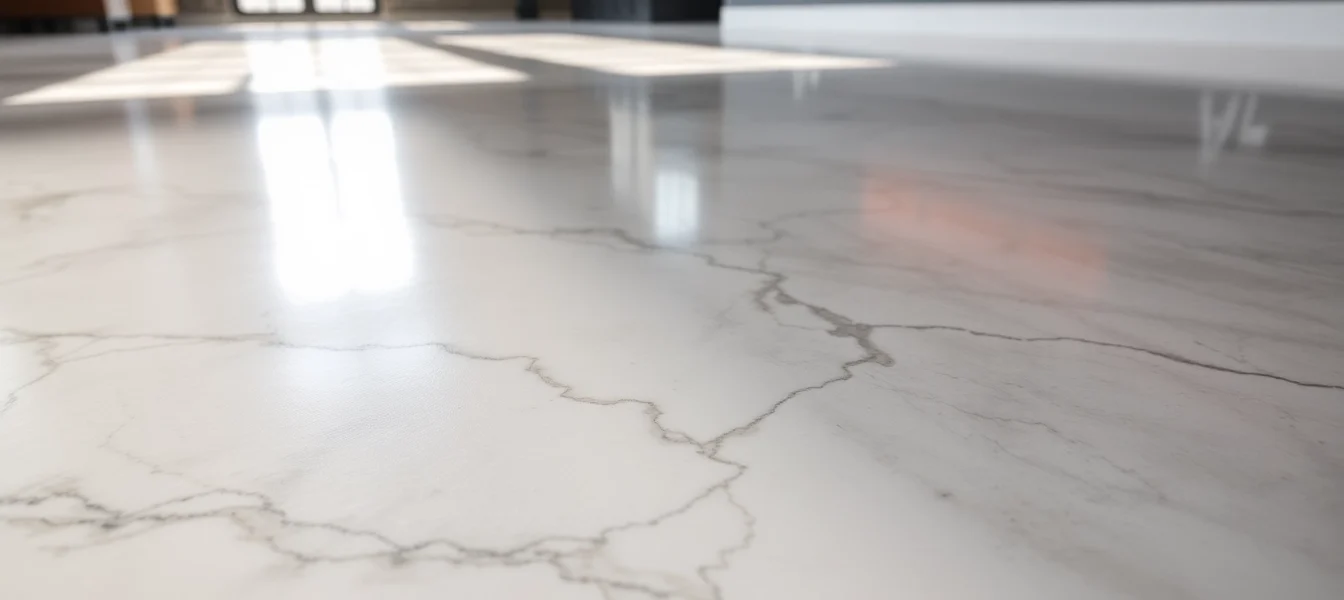Understanding Epoxy Resin Floors: Composition and Benefits
Epoxy resin floors have become a popular choice for both residential and commercial applications due to their exceptional durability, aesthetic appeal, and ease of maintenance. These floors are composed of a base resin and a hardener that chemically react to form a rigid, high-strength plastic material. The unique composition results in a surface that can withstand heavy traffic, resist chemicals, and maintain its appearance over time. For those seeking a reliable and visually striking flooring solution, exploring the fundamentals of epoxy resin flooring provides valuable insight into why this technology continues to dominate the industry. Learn more about epoxy resin floor options and customizations to suit your specific needs.
What Is Epoxy Resin Flooring?
Epoxy resin flooring is a seamless, resilient surface created by applying multiple layers of epoxy coatings directly over concrete or other substrates. The application yields a durable, glossy, and smooth surface that not only enhances the appearance but also offers practical benefits. Unlike traditional paints or coatings, epoxy provides a chemical bond that significantly improves resistance to stains, abrasions, impact, and moisture ingress. Its adaptability makes it suitable for a wide range of spaces including garages, warehouses, retail outlets, laboratories, and even decorative residential areas.
Key Advantages of Epoxy Resin Floors
The popularity of epoxy resin floors stems from their multifaceted benefits:
- High Durability: Capable of supporting heavy machinery and foot traffic without deterioration.
- Chemical Resistance: Excellent protection against oils, acids, and solvents, ideal for industrial environments.
- Ease of Maintenance: Smooth, sealed surface simplifies cleaning and reduces bacteria buildup.
- Enhanced Aesthetics: Available in a variety of colors, finishes, and decorative effects such as metallic or marble looks.
- Cost-Effectiveness: Long lifespan combined with low maintenance costs makes it a practical investment.
- Quick Installation: Many modern epoxy kits allow for fast application, minimizing downtime.
Common Applications in Residential and Commercial Spaces
Epoxy floors are versatile and applicable across numerous sectors:
- Residential Garages: Enhancing durability and aesthetic appeal while resisting stains and cracks.
- Industrial Facilities: Supporting the high demands of manufacturing, warehousing, and logistics centers.
- Retail and Showroom Spaces: Providing a sleek, customizable appearance that complements display setups.
- Healthcare and Laboratory Environments: Offering hygienic, seamless surfaces resistant to disinfectants.
- Basements and Recreational Rooms: Creating stylish, moisture-resistant floors in residential settings.
Choosing the Right Epoxy Resin Floor Type
Self-Leveling vs. Non-Slip Options
When selecting an epoxy floor, understanding the differences between self-leveling and non-slip types is crucial. Self-leveling epoxy is designed for a smooth, even finish, making it ideal for aesthetic high-end applications like marble or polished designs. It flows effortlessly and evenly coats uneven surfaces, creating a seamless look. Conversely, non-slip epoxy incorporates added aggregates or textured finishes to enhance traction, making it suitable for areas prone to moisture or heavy foot traffic where safety is a priority.
UV-Resistant and Decorative Finishes
Advances in epoxy technology have introduced UV-resistant coatings that prevent yellowing and degradation caused by sunlight exposure, extending the lifespan of outdoor or sunlit spaces. Decorative finishes such as metallic, flake, or quartz-infused epoxy allow for customization, transforming functional floors into visually dynamic elements. These options offer not just durability but also a chance to complement branding, interior themes, or personal preferences.
Factors to Consider for Longevity and Aesthetics
To ensure your epoxy floor retains its beauty and strength, consider factors like substrate condition, anticipated load capacity, environmental exposure, and maintenance routines. Proper preparation, high-quality materials, and professional installation or meticulous DIY practices significantly influence the durability and appearance. Additionally, selecting finishes tailored to your specific environment can prevent issues such as peeling, bubbling, or discoloration.
Preparation and Installation Best Practices
Surface Preparation for Optimal Bonding
Successful epoxy flooring begins with a clean, dry, and properly prepared substrate. Concrete surfaces should be thoroughly cleaned, removing dust, grease, and previous coatings. Mechanical methods like shot blasting or grinding are often employed to create a profile conducive to adhesion. Addressing surface imperfections, controlling moisture levels, and ensuring temperature compliance are critical steps prior to application.
Step-by-Step Application Process
Typically, epoxy installation involves:
- Surface preparation and priming
- Applying a base epoxy coat
- Incorporating decorative chips or aggregates if desired
- Applying subsequent coats for thickness and protection
- Sealing with a topcoat for gloss and durability
Each layer must cure appropriately, with attention to environmental conditions like temperature and humidity.
DIY vs. Professional Installation: Pros and Cons
DIY epoxy installation can be cost-effective and satisfying for small-scale projects; however, it demands meticulous surface preparation, adherence to mixing ratios, and environmental control. Professional installers offer expertise, high-quality tools, and proven techniques that ensure a seamless, durable finish, often with warranties. Consider project scale, complexity, and your skill level when choosing between these approaches.
Maintaining Your Epoxy Resin Floor for Peak Performance
Routine Cleaning and Care
Maintaining your epoxy floor involves regular sweeping or vacuuming to remove debris, followed by damp mopping with mild, non-abrasive cleaners. Avoid harsh chemicals and abrasive scrubbers that can damage the surface. For stubborn stains, specific epoxy-safe cleaners provide effective results without compromising integrity.
Touch-Ups and Repair Tips
Minor chips or scratches can be repaired with epoxy repair kits that match the original finish. Sanding the damaged area, cleaning thoroughly, and applying a thin epoxy layer ensures seamless integration. Addressing damage promptly prevents further deterioration and extends the floor’s lifespan.
Extending Floor Life Through Proper Maintenance
Protecting your floor from excessive impact, avoiding dragging heavy objects, and using protective pads can significantly prolong its service life. Regularly inspecting for signs of wear allows early intervention, minimizing costly repairs. Applying a topical sealant or re-coating after several years refreshes the surface, maintaining its appearance and performance.
Performance Metrics and Innovations in Epoxy Flooring
Measuring Durability and Resistance
Epoxy floors are evaluated based on parameters like abrasion resistance, chemical protection, impact tolerance, and adhesion strength. Industry standards include ASTM tests, which quantify the material’s capabilities. Modern formulations continue to improve these metrics, providing peace of mind in demanding environments.
Emerging Trends and Technological Improvements
Innovations such as UV-stable epoxies, faster curing agents, and environmentally friendly formulations are shaping the future of epoxy flooring. The integration of decorative and functional elements—like embedded LED lighting or antimicrobial surfaces—enhances both utility and visual appeal. Additionally, breakthrough surface technologies are making epoxy floors more sustainable and easier to maintain.
Case Studies: Successful Epoxy Floor Installations
Real-world implementations demonstrate epoxy’s adaptability. A retail store installed a high-gloss metallic epoxy to attract customers, resulting in increased foot traffic and brand visibility. An industrial warehouse upgraded to chemical-resistant epoxy, reducing damage costs by 30%. These examples highlight epoxy’s capacity to deliver both aesthetic and functional enhancements tailored to specific needs.




